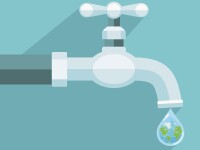Here at ProfHacker, we’ve discussed ways to handle a disruptive student, the student who talks too much to peers, who is not dressed appropriately, who has imbibed too much (and is in class), who overuses electronic equipment (for non-class related activities). It’s important that we know how to handle this disruptive behavior when it comes our way, because at some point it will come our way. It’s good to be prepared.
However, what we’ve done in these first examples is blame the student for bad social skills or boorish behavior (and yes, students make mistakes that can disrupt learning for other students). However, it’s important to recognize that students are not the only members of a classroom community with bad social skills or boorish behavior. What are we doing that might be causing the disrespectful student behavior?
In all the posts in this series, we have a few caveats:
- The first caveat: When we present scenarios, and it’s clear that how we handle these various situations depends upon the discipline, the class size, and the culture of an institution. We try to include as many of these variables as we can here, while understanding that we can’t account for every situational difference. What we are discussing here are behaviors that—no matter the discipline or the institutional culture—impede learning for students.
- The second caveat: ProfHacker is not a place to complain about students. That is not what this series of posts attempts. Instead, we want to focus on what we can do, positively and professionally, to handle the sometimes-difficult situations we can have with students.
- The third caveat: You might not have a problem with students behaving badly in your classes, but keep in my that ProfHacker’s readers span the spectrum from the most seasoned academic professionals to graduate students teaching for the first time. Please be sensitive in your comments.
- Lastly, please don’t focus solely on the examples in each scenario. These are merely examples that I chose to use. I could have chosen to use others. These behaviors and potential causes are in no way exhaustive, and they are merely examples. You could provide more of your own in comments below, if you wish.
What follows are some of the scenarios we’ve covered in the “Disruptive Behavior” series and a professor action that might elicit this undesirable behavior in students. While the professorial actions noted below might not be applicable, it is clear that we have to take responsibility for some of the actions in our classes. Problems are not always the fault of students.
♦ ♦ ♦ ♦ ♦ ♦ ♦ ♦
Students interrupt you while you lecture.....
- You don’t give students enough time to voice an opinion or ask a question.
- You move through the material too quickly.
- You do not display respectful behavior when a student disagrees with your stated opinion.
Student talks with his/her neighbors about off-topic subjects.....
- You lecture, expecting students to sit still and take notes
- You don’t vary your voice (speaking in monotones).
- You only concern yourself with one side of the room (typically the right side), leaving the other side to entertain themselves.
Student texts on a cell phone or plays with Facebook on a computer.....
- You use the same teaching strategy/pedagogy each class session.
- You are too serious.
- You do not intervene quickly enough to stop this action.
Students don’t participate in class discussions.
- You ask poorly worded or ambiguous questions they don’t understand.
- You do not know the students’ names. (This one is applicable for large lecture classes.)
- You have created an environment where students are afraid to be wrong.
Student answers all questions you ask, leaving no way for other students to engage with you or the material.
- You haven’t set out clear guidelines for classroom interactions.
- You ask closed questions.
- You ask global questions that do not have a specific answer
Student undermines the professor’s authority.....
- You have engaged in a battle of the wills in a public way
- You are not prepared to teach that day’s (week’s, or semester’s) lessons.
- You are inconsistent in your policies and their consequences.
Student wears inappropriate clothing (too much skin or clothing labeled in a shocking way).....
- You are sending the wrong message to the student that you WANT that type of dress in the classroom (not looking at a student’s face, for example).
- You are not dressed professionally yourself (showing too much skin, for example).
♦ ♦ ♦ ♦ ♦ ♦ ♦ ♦
Now it’s your turn. What student conduct have you seen that could be a result of your inadvertently poor behavior? Please leave comments below.
[Image by Flick user Lamont_Cranston and used under the Creative Commons license.]










